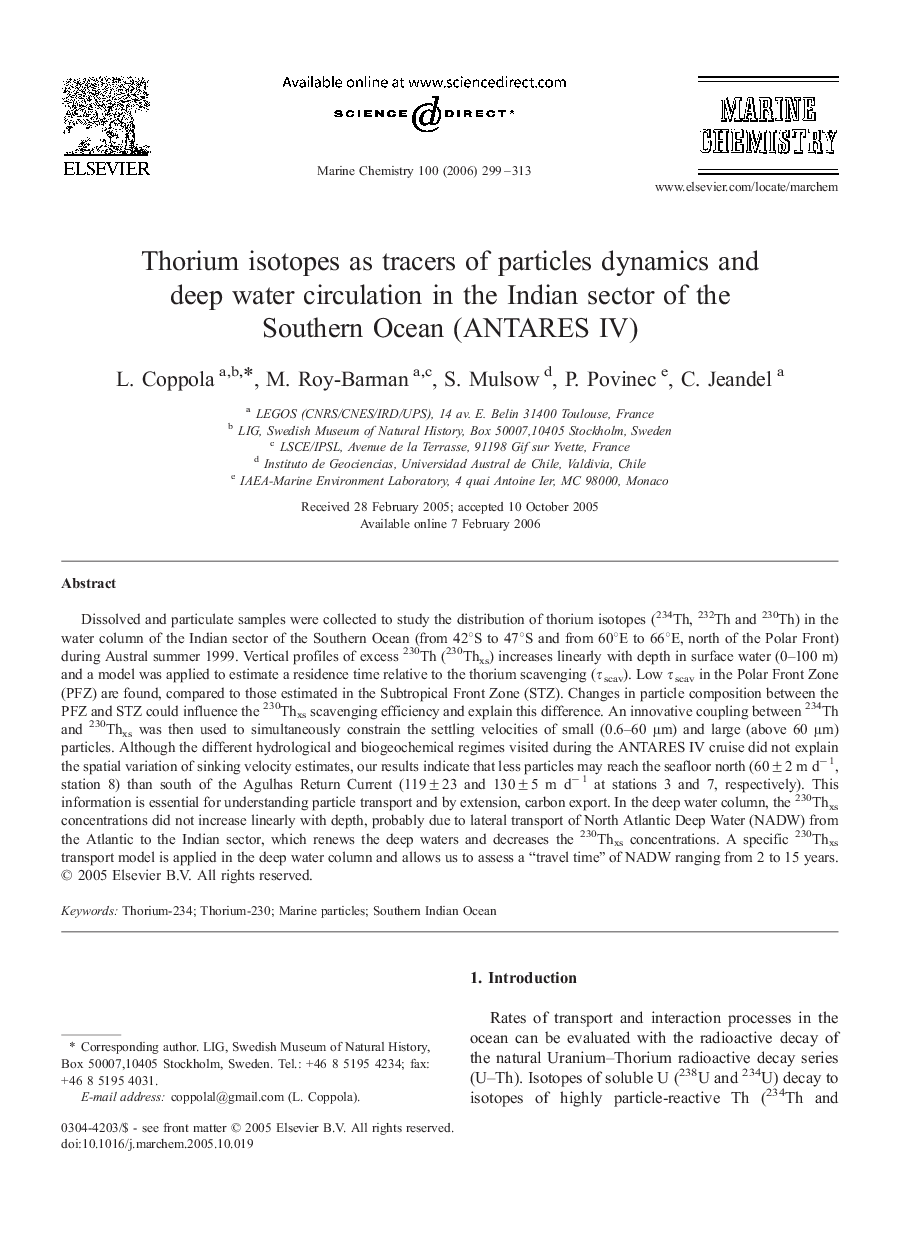| Article ID | Journal | Published Year | Pages | File Type |
|---|---|---|---|---|
| 1263572 | Marine Chemistry | 2006 | 15 Pages |
Dissolved and particulate samples were collected to study the distribution of thorium isotopes (234Th, 232Th and 230Th) in the water column of the Indian sector of the Southern Ocean (from 42°S to 47°S and from 60°E to 66°E, north of the Polar Front) during Austral summer 1999. Vertical profiles of excess 230Th (230Thxs) increases linearly with depth in surface water (0–100 m) and a model was applied to estimate a residence time relative to the thorium scavenging (τscav). Low τscav in the Polar Front Zone (PFZ) are found, compared to those estimated in the Subtropical Front Zone (STZ). Changes in particle composition between the PFZ and STZ could influence the 230Thxs scavenging efficiency and explain this difference. An innovative coupling between 234Th and 230Thxs was then used to simultaneously constrain the settling velocities of small (0.6–60 μm) and large (above 60 μm) particles. Although the different hydrological and biogeochemical regimes visited during the ANTARES IV cruise did not explain the spatial variation of sinking velocity estimates, our results indicate that less particles may reach the seafloor north (60 ± 2 m d− 1, station 8) than south of the Agulhas Return Current (119 ± 23 and 130 ± 5 m d− 1 at stations 3 and 7, respectively). This information is essential for understanding particle transport and by extension, carbon export. In the deep water column, the 230Thxs concentrations did not increase linearly with depth, probably due to lateral transport of North Atlantic Deep Water (NADW) from the Atlantic to the Indian sector, which renews the deep waters and decreases the 230Thxs concentrations. A specific 230Thxs transport model is applied in the deep water column and allows us to assess a “travel time” of NADW ranging from 2 to 15 years.
